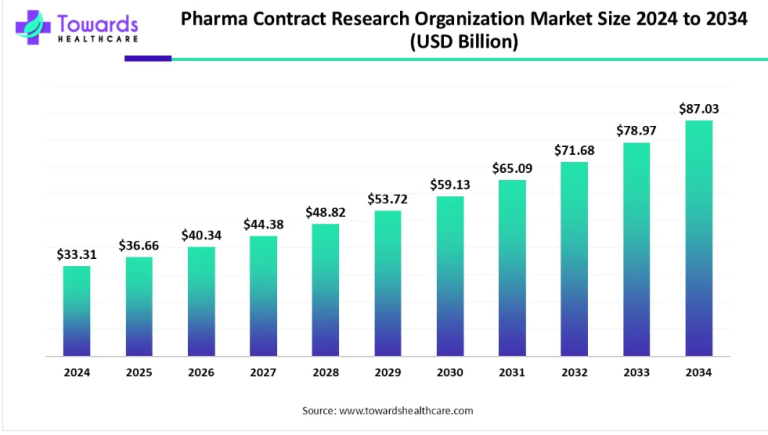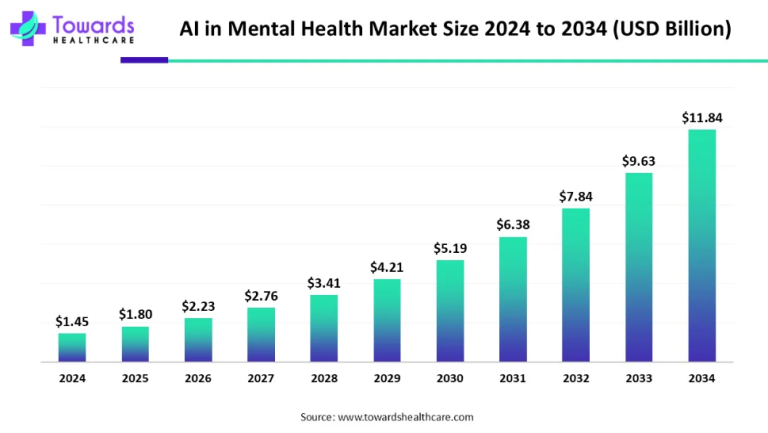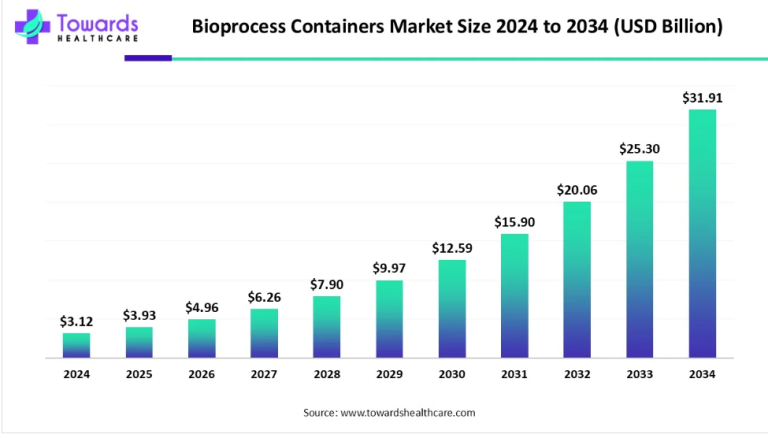Table of Contents
ToggleGlobal Market for Asthma and COPD Medications Size, Trends, and Company Insights
The global asthma and chronic obstructive pulmonary disease (COPD) medications market was valued at USD 37.22 billion in 2022 and is projected to reach USD 61.54 billion by 2032, growing at a compound annual growth rate (CAGR) of 5.01% from 2023 to 2032.
Download statistics of this report @ https://www.towardshealthcare.com/download-statistics/5011
Asthma and COPD are common lung conditions that make it difficult to breathe due to the constriction of airways. Asthma is a condition where the airways narrow, leading to breathing difficulties, wheezing, chest tightness, and shortness of breath. Chronic Obstructive Pulmonary Disease (COPD) is a group of lung diseases, including emphysema and chronic bronchitis, that obstruct airflow and make breathing harder.
Both asthma and COPD are diagnosed through tests like X-rays, sputum examination, and nitric oxide testing. These conditions are characterized by bronchoconstriction, which can be managed with treatments like corticosteroids, anticholinergic medications, and long-acting beta-agonists. During an asthma attack, bronchoconstriction happens suddenly, and bronchodilators, typically administered with a special inhaler, can provide quick relief.
Pulmonary function tests, such as spirometry and body-plethysmography, are vital for diagnosing asthma and COPD, determining their severity, and managing the conditions.
COPD is the third leading cause of death worldwide, responsible for 3.23 million deaths in 2019, according to the World Health Organization (WHO). More than 80% of these deaths occurred in low- and middle-income countries. Additionally, the aging global population is contributing to the growing demand for treatments. The number of people aged 65 or older is expected to more than double by 2050, from 727 million in 2020 to over 1.5 billion.
New research suggests that children who have experienced traumatic events, like divorce or the loss of a parent, are more likely to develop asthma.
The Impact of COVID-19 on the Asthma and COPD Drug Market
The COVID-19 pandemic has had a significant impact on people with asthma. A study published in the Journal of Medical Virology in March 2021 highlighted that, at the start of the pandemic, the mental health of asthmatic patients worsened, though many took extra precautions to avoid infection due to fears of being more vulnerable to the virus. COVID-19 targets the lungs and causes lung inflammation, which raised concerns for those with chronic respiratory conditions like asthma and COPD.
Respiratory infections, including COVID-19, often trigger asthma and COPD flare-ups. This is because viral infections can cause the body to produce pro-inflammatory cytokines like IL-1 and IL-6, leading to increased inflammation in the airways. Although it’s still unclear whether COVID-19 directly exacerbates asthma or COPD, the virus’s similar inflammatory effects suggest that flare-ups could occur. As a result, the main goal in treating asthma and COPD patients with COVID-19 is to prevent exacerbations that could further impair lung function.
Factors Driving Market Growth
The increasing number of asthma cases worldwide is a major factor driving the growth of the asthma and COPD drug market. According to the Global Asthma Network, around 339 million people are affected by asthma, with about 1,000 deaths every day. Rising public awareness of respiratory diseases also contributes to market growth. Innovations in asthma treatments by manufacturers and researchers are further expanding the market. Additionally, government initiatives aimed at improving the lives of asthma and COPD patients and the growth of healthcare infrastructure globally are key drivers.
Environmental factors like rising air pollution and the increasing prevalence of smoking also contribute to the growth of the asthma and COPD drug market. However, the high cost of treatment for these conditions could pose a challenge to market expansion.
Asthma Drug Development
Short-Term Relievers/Short-Acting Beta-Agonists (SABAs)
These medications are primarily used as needed to treat sudden breathing problems like bronchospasm and wheezing. They are not specific to asthma or COPD and can be used to treat either condition. Most of the recent developments in this class have focused on reformulating the drugs to replace chlorofluorocarbons (CFCs), in line with global efforts to protect the ozone layer, rather than introducing new molecules.
Long-Acting Bronchodilators
Unlike SABAs, long-acting bronchodilators are used regularly to prevent bronchospasm and reduce symptoms of airflow obstruction. These medications are not intended for immediate relief but are part of a long-term treatment plan. This alters the development process compared to SABAs, as the focus is on maintaining control over the condition rather than immediate symptom relief.
Long-Acting Beta-Agonists (LABAs)
LABAs were initially developed as standalone treatments, but over time, asthma guidelines have shifted towards using combination products that pair LABAs with corticosteroids. This combination has largely replaced the use of single-agent LABAs for asthma treatment, offering a more effective approach.
Long-Acting Muscarinic Antagonists (LAMAs)
One LAMA, tiotropium, has been approved for once-daily maintenance therapy in asthma. It is delivered via a special inhaler and is primarily used to help control asthma symptoms on a long-term basis.
Anti-Inflammatory Drugs
These drugs target the underlying airway inflammation in asthma, rather than just addressing the bronchospasm or narrowing of the airways. As a result, the development of these medications focuses on improving long-term asthma control rather than providing immediate relief.
Inhaled Corticosteroids (ICS)
While systemic steroids are used for severe asthma flare-ups, inhaled corticosteroids (ICS) have become a cornerstone of asthma treatment. ICS are effective at managing inflammation in the airways, and their use is considered safer and more efficient for long-term asthma control.
Anti-Leukotrienes
Although the development of new anti-leukotriene drugs has been slow, they remain an important part of asthma treatment. These oral medications work beyond the airways, and early-stage development focuses on determining the right dose and understanding their effects through laboratory tests and animal studies.
ICS/LABA Combination Therapy
Several combination products that pair an ICS with a LABA have been developed for asthma treatment. These combinations address safety concerns about using LABAs alone and offer the added benefit of convenient, dual-action treatment. This combination therapy provides both long-term control of asthma and relief from bronchospasm, which a single ICS medication alone may not achieve.
Biologic Therapies: Anti-IgE and Anti-IL-5
Biologic treatments for asthma, which target specific immune responses, have been in development for several years. Though their clinical development has been challenging, these therapies have gained approval and provide new options for patients with certain types of asthma. They offer fresh insights into the disease’s pathophysiology and broaden the range of available treatments.
Challenges in Developing Combination Drugs
Creating combination drugs like SAMA/SABA (short-acting muscarinic antagonist and short-acting beta-agonist) presents challenges, as these drugs must demonstrate that each component contributes effectively to bronchodilation. Regulatory agencies, such as the FDA, require evidence that both ingredients are beneficial when combined.
Key Players in the Asthma and COPD Drug Market
Some of the leading companies in the global asthma and COPD drug market include:
- Pfizer Inc.
- Teva Pharmaceutical Industries Ltd.
- Merck & Co. Inc.
- Grifols S.A.
- Novartis AG
- Cipla Inc.
- Abbott
- Astellas Pharma
- Hoffmann-La Roche Ltd.
- Glenmark Pharmaceuticals
Discover our detailed Table of Contents (TOC) for the Industry, providing a thorough examination of market segments, material, emerging technologies and key trends. Our TOC offers a structured analysis of market dynamics, emerging innovations, and regional dynamics to guide your strategic decisions in this rapidly evolving healthcare field – https://www.towardshealthcare.com/table-of-content/improved-asthma-and-copd-drugs-with-fewer-side-effects-are-on-the-way
To own our research study instantly, Click here @ https://www.towardshealthcare.com/price/5011
You can place an order or ask any questions, please feel free to contact us at sales@towardshealthcare.com
About Us
Towards Healthcare is a leading global provider of technological solutions, clinical research services, and advanced analytics to the healthcare sector, committed to forming creative connections that result in actionable insights and creative innovations. We are a global strategy consulting firm that assists business leaders in gaining a competitive edge and accelerating growth. We are a provider of technological solutions, clinical research services, and advanced analytics to the healthcare sector, committed to forming creative connections that result in actionable insights and creative innovations.
Visit Dental Specifics: https://www.towardsdental.com
Explore the comprehensive statistics and insights on healthcare industry data and its associated segmentation: Get a Subscription
For Latest Update Follow Us: https://www.linkedin.com/company/towards-healthcare







